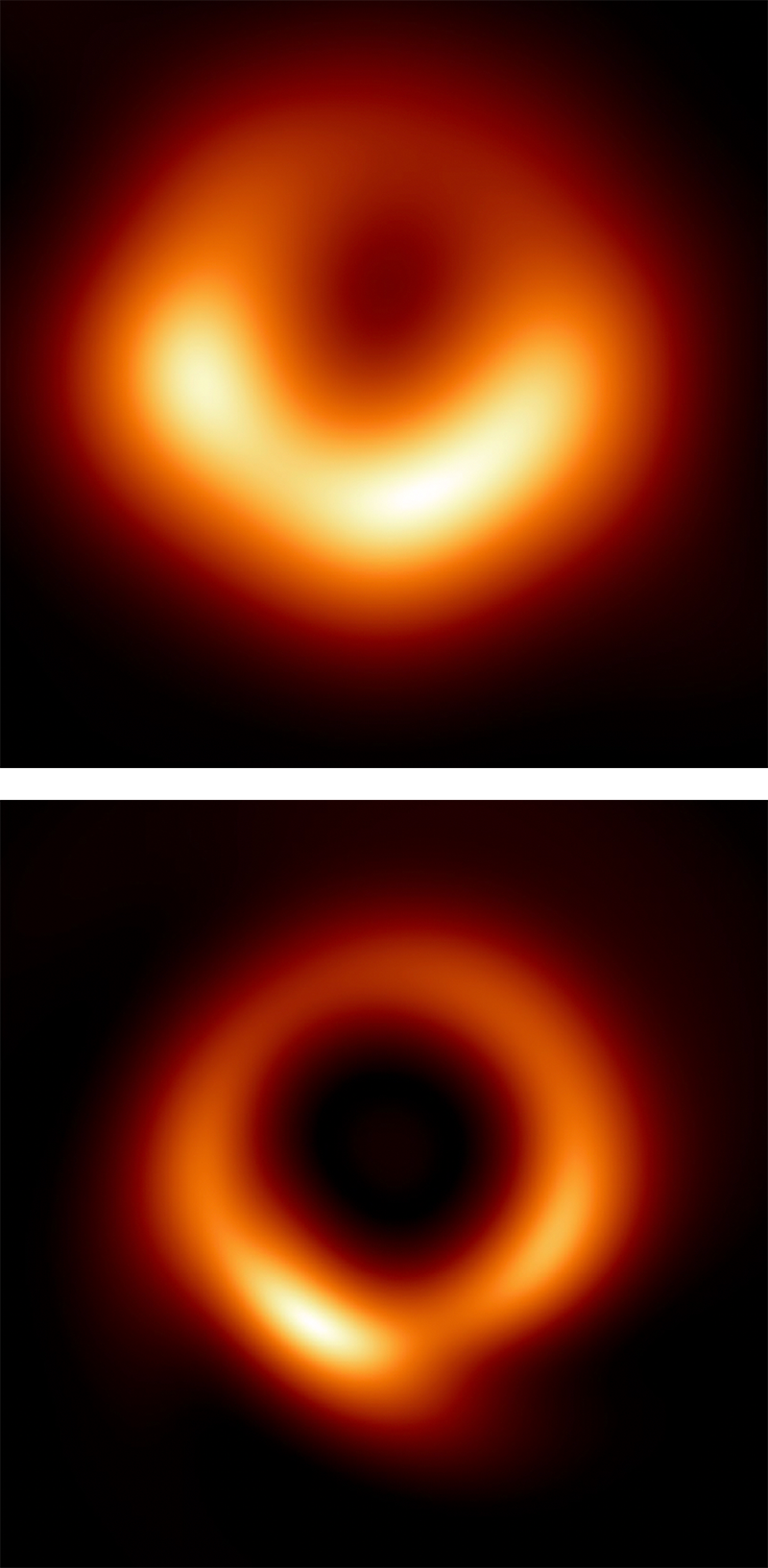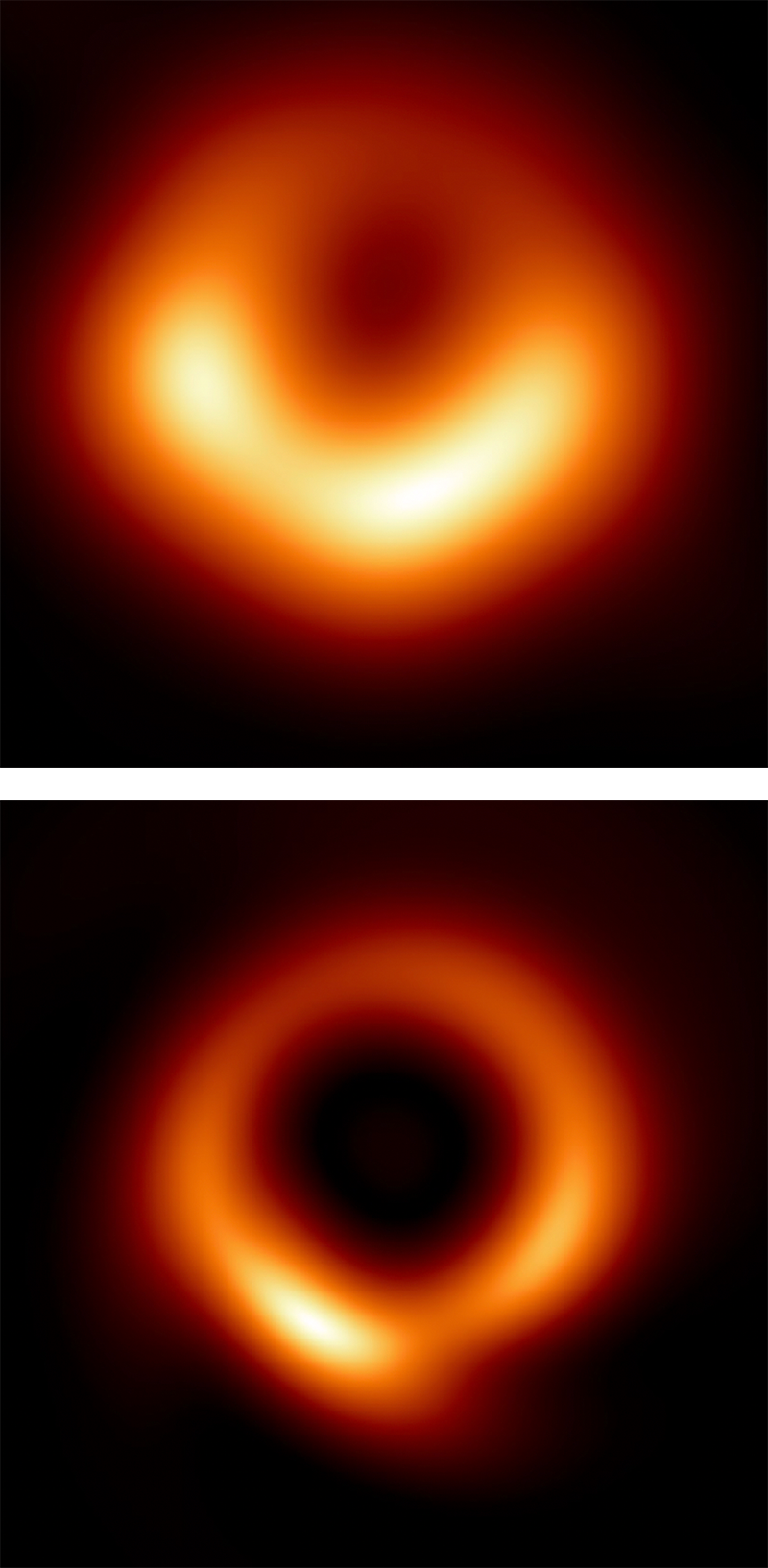Machine Learning Delivers Sharper Black Hole Image
In 2019, the Event Horizon Telescope (EHT) Collaboration unveiled the first-ever image of a black hole, which some described as a “fuzzy, orange donut.” EHT involves a global array of radio telescopes, which together create an effective Earth-sized observatory with high resolution. However, since the telescopes can’t cover the whole planet, the image has to be constructed from incomplete snapshots from each telescope. Now a team of researchers shows the power of machine learning in performing this task [1]. Their new high-fidelity reconstruction of M87—when compared to the 2019 image—reveals a better defined central region surrounded by a thinner bright ring of accreting gas.
The new image is obtained with a machine-learning approach called dictionary learning, which uses a large set of training material to extract rules for analyzing data. The approach is used in image recognition. For instance, an algorithm of this kind, after being trained with a broad variety of images of different types of dogs, could learn to recognize and analyze the image of a dog, says Dimitrios Psaltis, coauthor of the paper. Here the researchers produced a set of simulated black holes and then determined how those black holes would appear in EHT observations, creating a large suite of synthetic black hole images with which to train the algorithm.
“The most important thing with any training algorithm or any machine-learning algorithm is to ensure that your training set does not have preconceived ideas of what the result is going to be,” says Psaltis. To prevent their machine-learning algorithm from creating an image of what M87 was expected to look like, rather than of what the black hole actually looks like, the researchers included a broad range of black holes in their training procedures. The team’s suite of 30,000 synthetic images were generated from simulated black holes that had different masses, as well as different environments of accreting matter.
Once the machine-learning algorithm had been trained with these images, the team used it to build an image of the black hole from the M87-data collected by EHT. The result was an image with a much thinner orange ring than seen in the original image and with a brighter rim at the bottom.
The researchers found the resulting image to be a good fit with theoretical expectations. This consistency is “very good,” says Jessica Lu, an astronomy professor at the University of California, Berkeley, who was not involved in the research. “That gives us a lot of trust that the image that they’re deriving is, if not the best, then one of the best that can be predicted from the data,” she says. Lu says she’s looking forward to the researchers taking the improved estimate of the size of M87’s ring of emission and using it to derive a more precise estimate of the black hole mass than was possible with the old image.
“I think it is remarkable what you get by merging or marrying together the best telescopes in the world with modern [machine-learning] algorithms,” Psaltis says. Next the team plans to apply the algorithm to Sagittarius A*, the black hole at the center of our own Milky Way, which was also imaged by EHT (See Research News: First Image of the Milky Way’s Black Hole). Psaltis hopes the machine-learning algorithm will help the researchers dig deeper into the data. Improved images could help them figure out, for instance, how fast matter is moving around black holes and how much of that movement is contributing to image blurriness. By removing the blurriness that’s simply due to gaps in the data, the researchers will be able to gather better information on what really happens around the black hole, he says.
–Allison Gasparini
Allison Gasparini is a freelance science writer based in Santa Cruz, CA.
References
- L. Medeiros et al., “The image of the M87 black hole reconstructed with PRIMO,” Astrophys. J., Lett. 947, L7 (2023).





